Testament to the community spirit of my village, when I asked for permission to access neighbours' gardens in this current lockdown to sample their fruit trees, I was inundated with generous offerings and a little curiosity I suspect. I explained my project and natural dyeing exploration, and was welcomed in to inspect their trees, while observing social distancing of course!
I was able to sample the leaves from the following trees - apple, cherry, plum, damson, fig and quince
I was able to sample the leaves from the following trees - apple, cherry, plum, damson, fig and quince
The colours of unmordanted fibre (left photo above: top to bottom: cherry, fig, plum, damson) ) were fairly beige to pale olive probably as expected, although the damson leaves did give me quite a vibrant lime green. The alum mordanted fibres (right photo top to bottom: cherry, fig, plum, apple, quince) were brighter and more yellow in general. The surprise was the yarn out of the pot containing quince leaves only - such a lovely coral colour. The unmordanted wool gauze samples showed a similar story,
I was lucky enought to ask a neighbour at the time he was having his damson trees pruned and so I came away with sizeable branches from which to remove the leaves and extract the dye.
The damson branches and twigs were cut into a bucket, recently boiled water added to cover and left overnight. Appreciable dye could be seen in the bucket at this point The next morning this was transferred to an urn, heated to a simmer for 1 hour, then twigs removed. The fibres were added to the liquid and simmered for a further hour then left to cool overnight. All the fibres had taken up the dye thanks to the tannin from the twigs, but the alum mordanted fibres were brighter and more coral than pink.
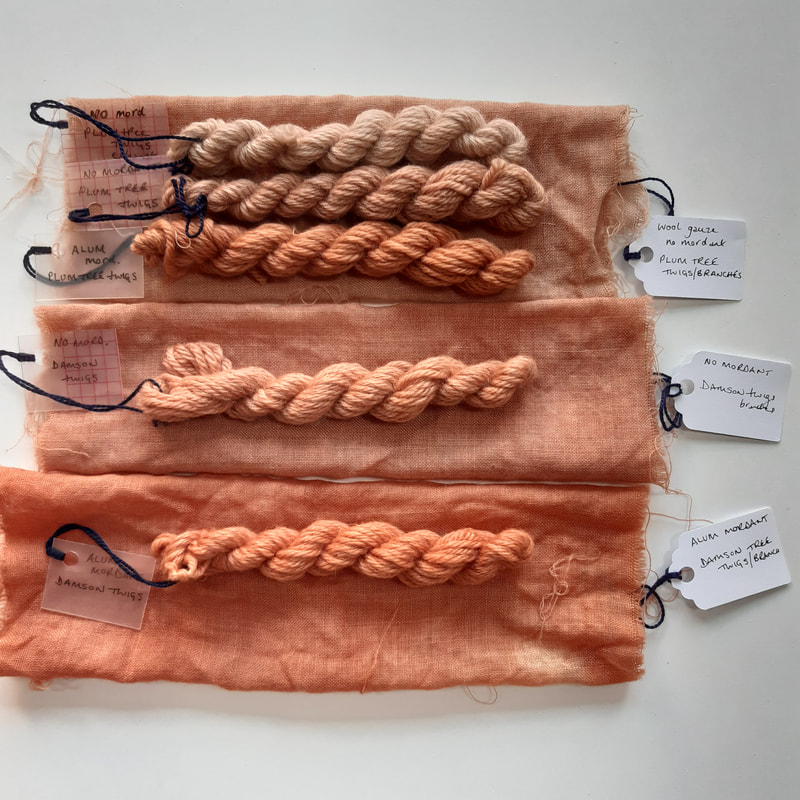 Top 3 yarns and gauze are from plum twigs, middle yarn and gauze are unmordanted in damson twig dye, and bottom are alum mordanted in damson twig dye.
Top 3 yarns and gauze are from plum twigs, middle yarn and gauze are unmordanted in damson twig dye, and bottom are alum mordanted in damson twig dye. There were many unripened damsons on the pruned branches and so I treated them separately, squashing each fruit and simmering for 1 hour, adding fibre and simmering for a further hour. Result - no detectable colour change in the fibre.despite there being 300% wof present relative to the dyeing fibre.
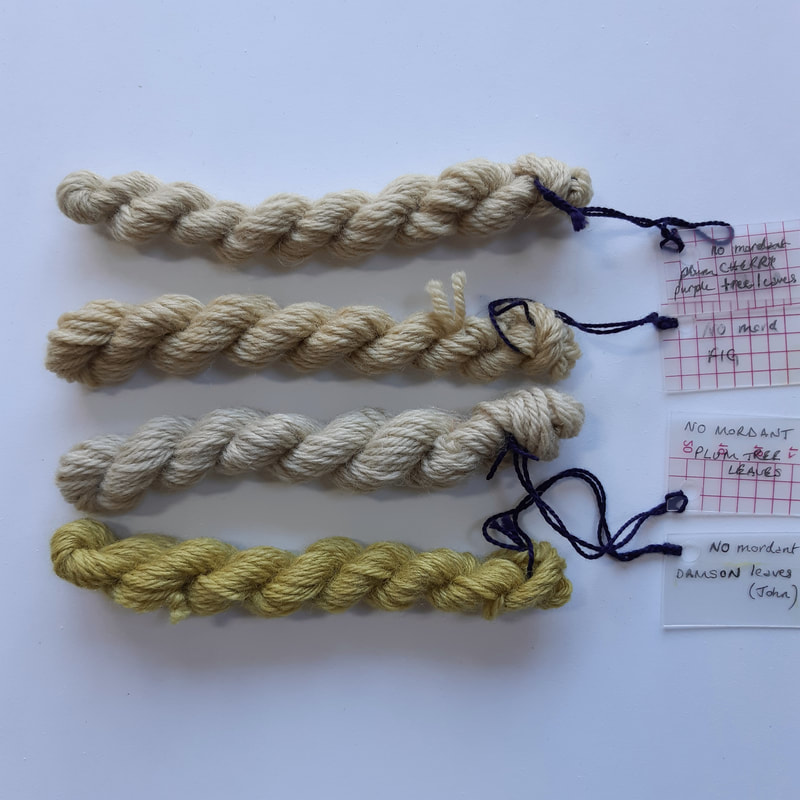
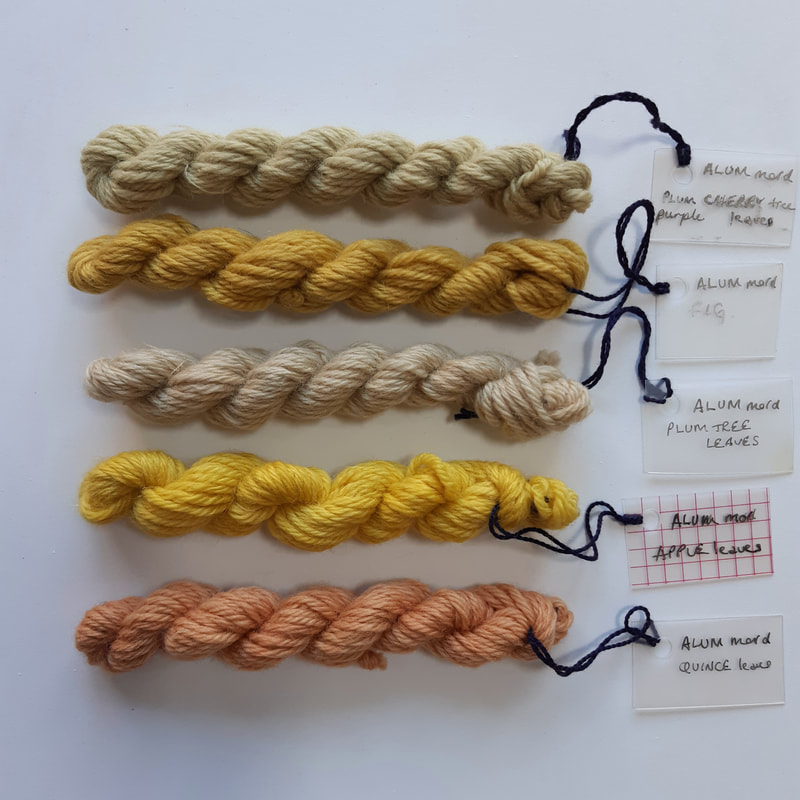
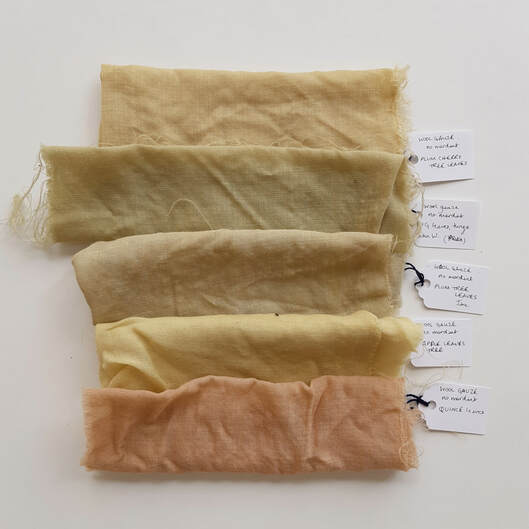
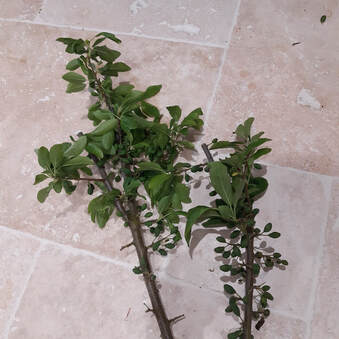
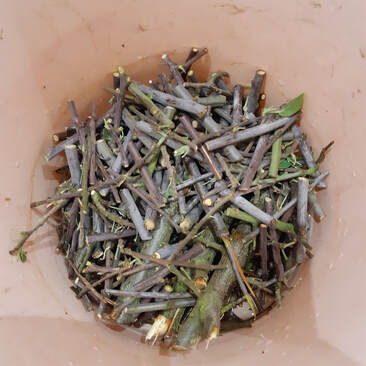
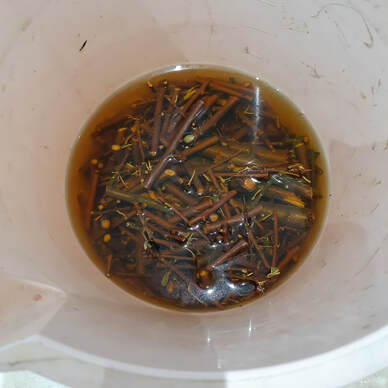
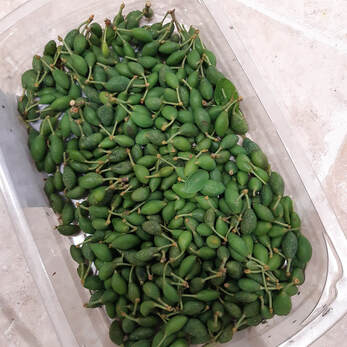
 RSS Feed
RSS Feed
